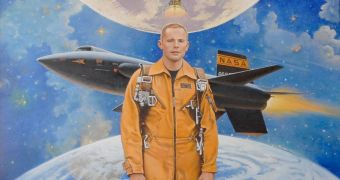Last Wednesday, on January 8, the United States Senate passed a bill that renames the NASA Dryden Flight Research Center, in Moffett Field, California to the NASA Neil A. Armstrong Flight Research Center, thus honoring the first astronaut ever to walk on the surface of the Moon.
The US House of Representatives passed a bill to make the new name official on December 31, 2012, Voted by 404 for and 0 against. With the approval of the Senate resolved, US President Barack Obama signed the decision into law on Thursday, January 9.
The former DFRC is the American space agency's leading flight research center, operating some of the world's most advanced and peculiar aircraft. The facility is also the home of the former Shuttle Carrier Aircraft, the heavily-modified Boeing 747s that could transport orbiters on their backs cross-country.
The NASA center has also been known as the High-Speed Flight Research Station (from 1949) and the High-Speed Flight Station (from 1954). It was named for former NASA Deputy Administrator and prominent aeronautical engineer Hugh L. Dryden on March 26, 1976, Space reports.
Dryden was not forsaken with the new decision. The area around the Center itself is now known as the Hugh L Dryden Aeronautical Test Range, thus continuing to honor the NASA pioneer.
The US Congress first tried to rename the DFRC back in 2007, but the attempt failed. An additional attempt took place since, with this one – the third – finally coming through. The installation now officially bears the name of Neil A. Armstrong, a former astronaut and test pilot, and the first man on the Moon.
Armstrong was born on August 5, 1930, and died on August 25, 2012, at the age of 82. He is best known for landing on the Moon during the Apollo 11 mission, in July 1969, alongside fellow NASA astronaut Buzz Aldrin.
“Neil Armstrong turned dream into reality by making that 'one small step for a man, one giant leap for mankind' on another world almost 240,000 miles away,” said in late 2013 Congressman Lamar Smith (R-Texas), who co-sponsored the bill.
“In some respects, I think Neil might have been a happier man if he had stayed a test pilot, becoming chief test pilot at NASA Dryden. His career in test flying will be remembered even more now that his name will be forever associated with the flight research center,” comments James Hansen.
Hansen, a historian by profession, is the author of First Man, an authorized biography of Neil Armstrong, which was published in 2005.
“Dryden recommended to President John F. Kennedy that the goal of putting a man on the moon within 10 years was achievable and something the American people could rally behind. Dryden was not able to see his dream become reality, as he died in 1965. Neil Armstrong was the one who flew the spacecraft that Dryden envisioned,” Smith said.

 14 DAY TRIAL //
14 DAY TRIAL //